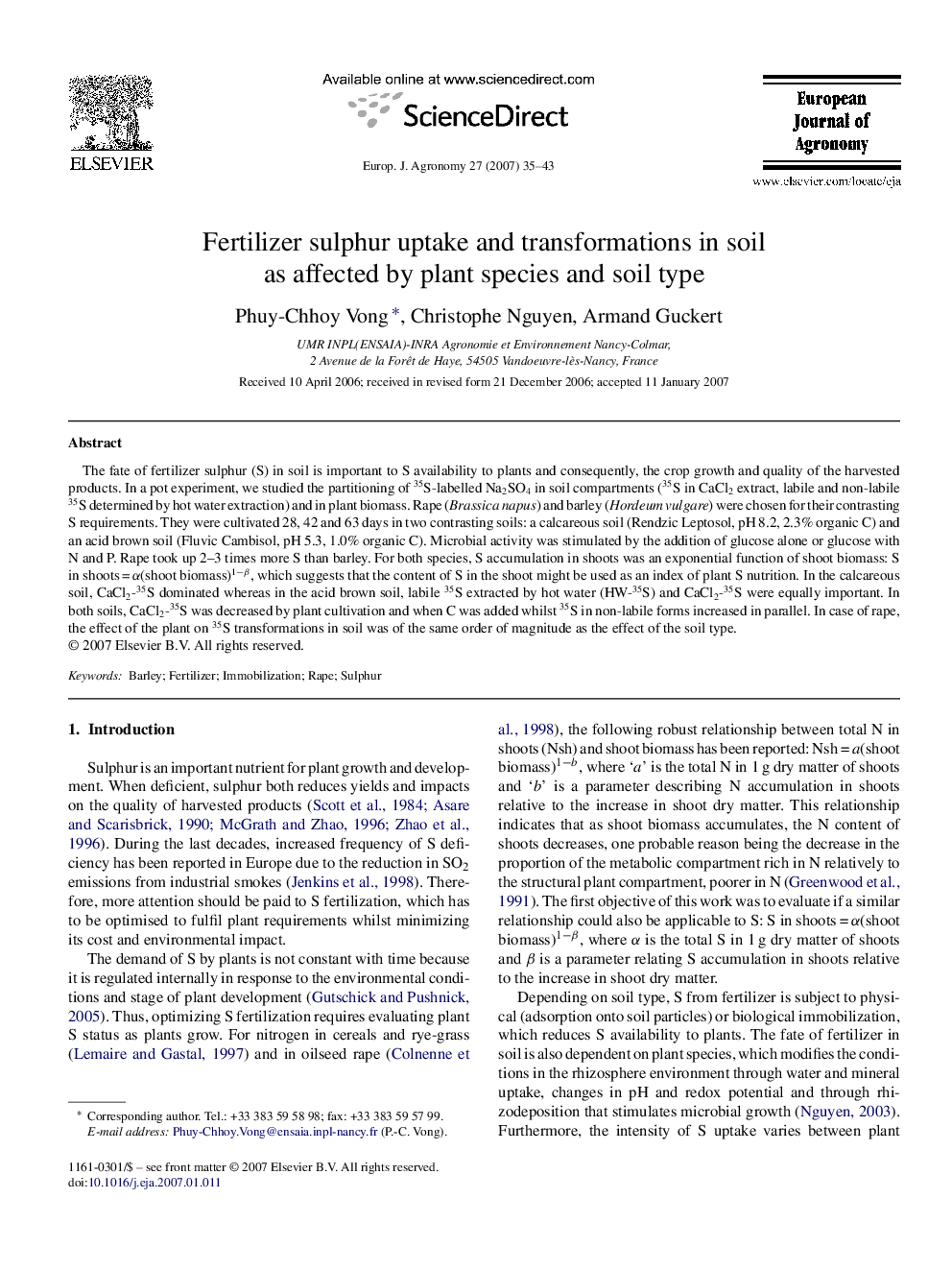| Article ID | Journal | Published Year | Pages | File Type |
|---|---|---|---|---|
| 4509572 | European Journal of Agronomy | 2007 | 9 Pages |
The fate of fertilizer sulphur (S) in soil is important to S availability to plants and consequently, the crop growth and quality of the harvested products. In a pot experiment, we studied the partitioning of 35S-labelled Na2SO4 in soil compartments (35S in CaCl2 extract, labile and non-labile 35S determined by hot water extraction) and in plant biomass. Rape (Brassica napus) and barley (Hordeum vulgare) were chosen for their contrasting S requirements. They were cultivated 28, 42 and 63 days in two contrasting soils: a calcareous soil (Rendzic Leptosol, pH 8.2, 2.3% organic C) and an acid brown soil (Fluvic Cambisol, pH 5.3, 1.0% organic C). Microbial activity was stimulated by the addition of glucose alone or glucose with N and P. Rape took up 2–3 times more S than barley. For both species, S accumulation in shoots was an exponential function of shoot biomass: S in shoots = α(shoot biomass)1−β, which suggests that the content of S in the shoot might be used as an index of plant S nutrition. In the calcareous soil, CaCl2-35S dominated whereas in the acid brown soil, labile 35S extracted by hot water (HW-35S) and CaCl2-35S were equally important. In both soils, CaCl2-35S was decreased by plant cultivation and when C was added whilst 35S in non-labile forms increased in parallel. In case of rape, the effect of the plant on 35S transformations in soil was of the same order of magnitude as the effect of the soil type.
